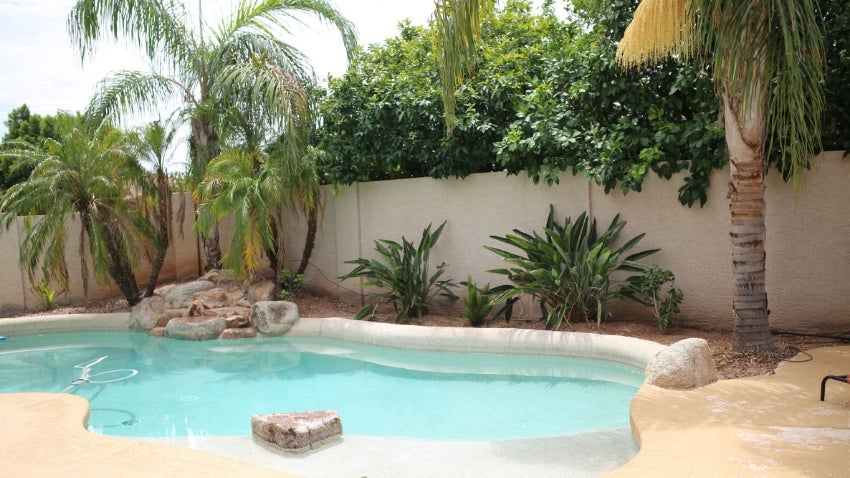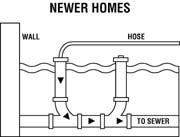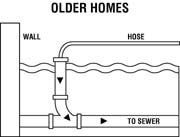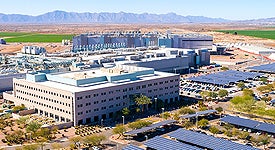
Ready to do maintenance on your pool? Before you start pumping out the water, you need to make sure you meet the city’s pool draining requirements.
The city prefers that all pool and spa water discharges be maintained on private property or in the sanitary sewer cleanout at the location. During general maintenance, when backwashing your pool, drainage into the sanitary sewer cleanout is not necessary if the discharge can be maintained on your private property. The best place to drain water is on your landscape.
No permit is needed to drain your pool if it is drained into the sanitary sewer cleanout or maintained on your property. Pipes that are “hard plumbed” to discharge off property (i.e. to the street) are prohibited.
You are not required to contact the city when you are refilling your pool, but residents should be aware of the rise in their utility bill due to the large consumption of water. The city does not give discounts when refilling your pool. You can use your utility pool to calculate the estimated cost to refill your pool.
If you are unable to locate the sanitary sewer cleanout, an exception to drain into the street can be requested.
Sanitary Sewer Cleanout
The sewer cleanout is typically a three- or four-inch black pipe about level with the landscaping, typically located close to the home. It may have a black cap, with a raised square nut or a recessed slot, which can be unscrewed providing access for the pool water disposal. In a newer home, you may find that there are two cleanout pipes. In this case, the one closer to the home is the preferred access point.
The City does not keep or maintain records detailing location information for a sewer cleanout on private property. If you have trouble locating your sewer cleanout or have questions on proper drainage or safe flow rates, consult a plumber.
Use the following procedure for using the sewer cleanout
- Locate the cleanout. If there are two, use the one closest to the home.
- Remove the cap and insert the drain hose a few inches into the pipe.
- Secure the drain hose so it won't pop out.
- Turn on the pump.
- Immediately check to make sure no water is backing up into the house. Drains for showers and tubs are the first places to check.
- If the water backs up, turn off the pump immediately. You may have a blockage, or the flow rate is too high.
- Caution: Using a cleanout in the wall is risky, and the potential for water backing up into the home is great.
Sewer Cleanouts


Diagrams courtesy of the City of Phoenix
NOTE: Do not install the pool drain line as a permanent fixture. This may violate the City plumbing code or County health regulations and could contaminate the water when you refill the pool. Pipes that are "hard plumbed" to discharge off property (i.e. to the street) are considered "a direct connection to the storm drain" and are prohibited.
Recommended Flow Rate
The recommended flow rate is no greater than 12 gallons per minute. The safe flow rate may differ depending on the size of the drain line, distance to the sewer main, and the condition of the pipes. It may be necessary to consult a plumber regarding a safe rate to discharge the pool water into the sewer clean out.
Hours Required to Drain a Pool
| Flow Rate | Pool Volume (Gallons) |
| (gal/min) | (gal/hr) | 10,000 | 11,000 | 12,000 | 13,000 | 14,000 | 15,000 |
| 6 | 360 | 28 hrs | 31 hrs | 33 hrs | 36 hrs | 39 hrs | 42 hrs |
| 7 | 420 | 24 hrs | 26 hrs | 29 hrs | 31 hrs | 33 hrs | 36 hrs |
| 8 | 480 | 21 hrs | 23 hrs | 25 hrs | 27 hrs | 29 hrs | 31 hrs |
| 9 | 540 | 19 hrs | 20 hrs | 22 hrs | 24 hrs | 26 hrs | 28 hrs |
| 10 | 600 | 17 hrs | 18 hrs | 20 hrs | 22 hrs | 23 hrs | 25 hrs |
| 11 | 660 | 15 hrs | 17 hrs | 18 hrs | 20 hrs | 21 hrs | 23 hrs |
| 12 | 720 | 14 hrs | 15 hrs | 17 hrs | 18 hrs | 19 hrs | 21 hrs |
Information courtesy of the City of Phoenix.
If you are unable to locate the sanitary sewer cleanout, an exception to drain into the street can be requested.



